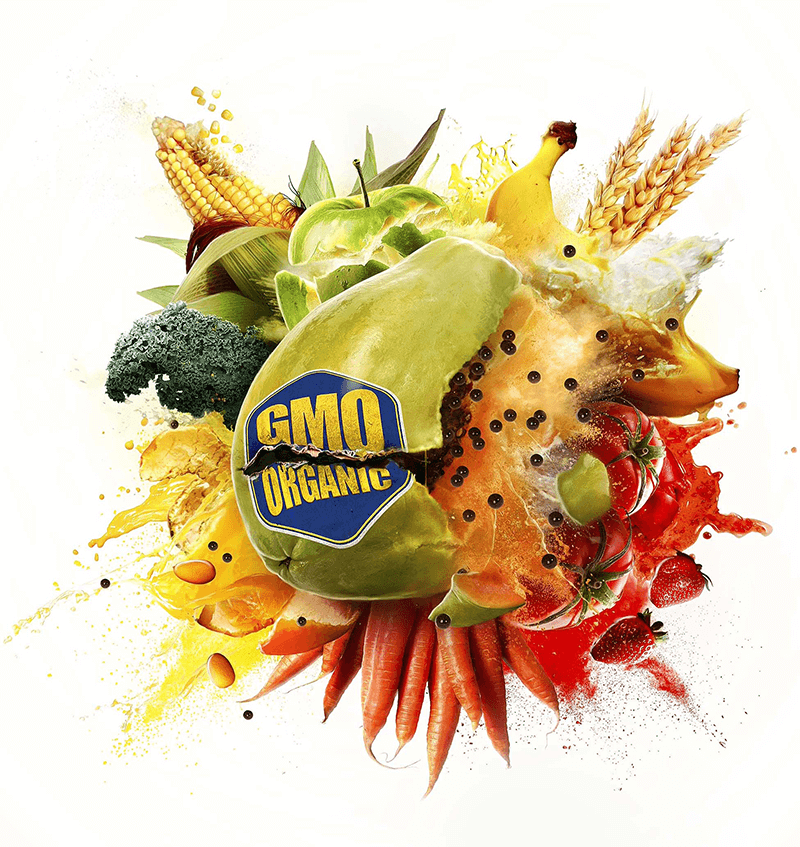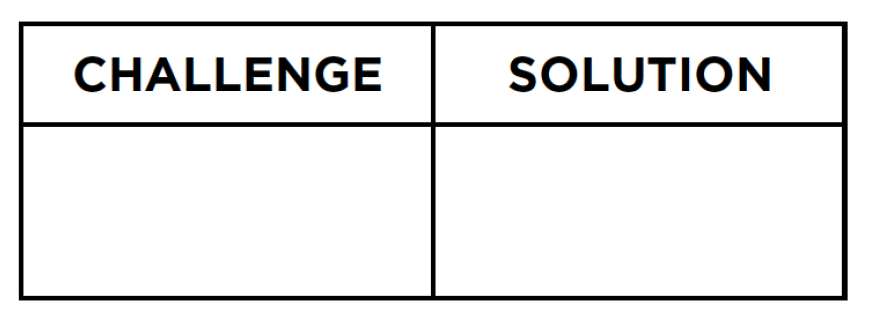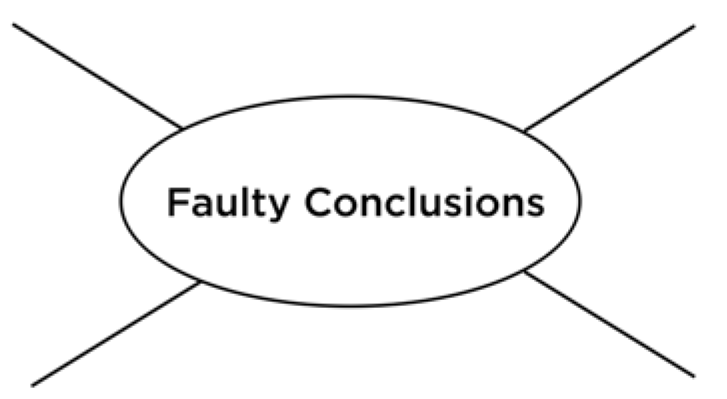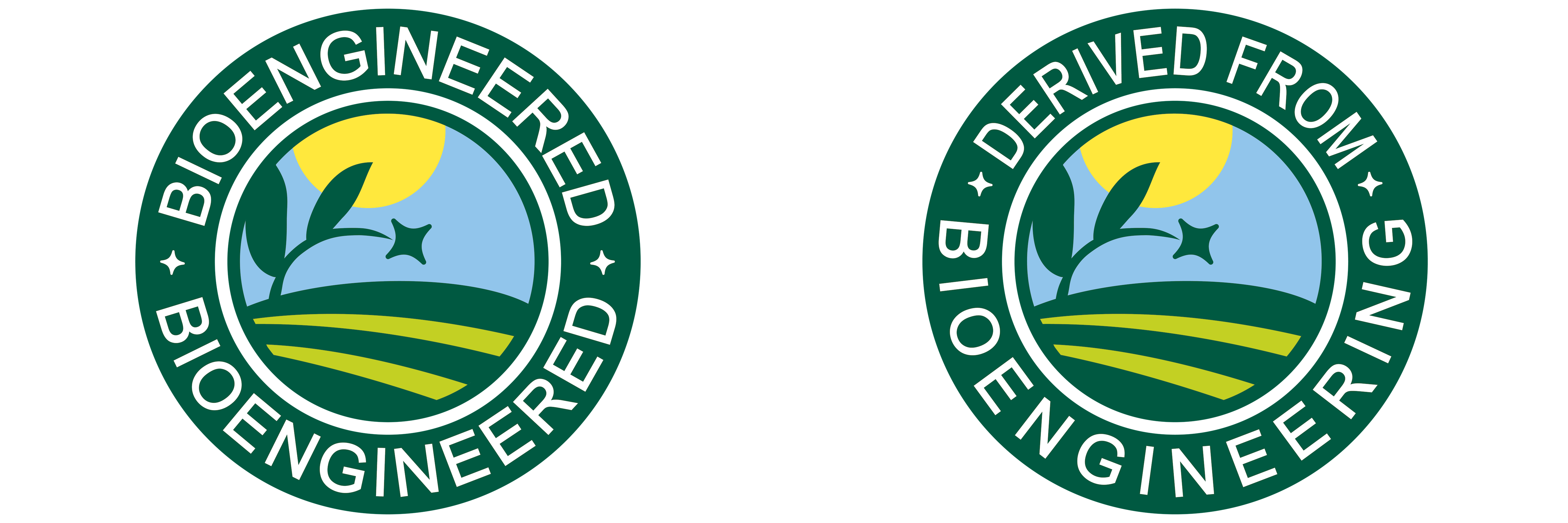Agricultural Literacy Curriculum Matrix
Lesson Plan
Food Evolution
Grade Level
Purpose
Students will view the 2016 documentary Food Evolution to evaluate the polarized debate surrounding bioengineering (GMOs). In this film director, Scott Hamilton Kennedy travels from Hawaiian papaya groves to Ugandan banana farms, to cornfields in Iowa to document how agricultural technology can be used in such varied crop settings. This lesson covers a socioscientific issue and aims to provide students with tools to evaluate science within the context of social and economic points of view. Grades 9-12
Estimated Time
Materials Needed
- Food Evolution documentary, 52-minute educational version
Vocabulary
food security: the state of having reliable access to a sufficient quantity of affordable, nutritious food
genetically modified organism (GMO): any organism whose genetic material has been altered using genetic engineering techniques
organic: term used to classify farming methods that limit the use of some common practices such as biotechnology and types of fertilizer or pesticide
Did You Know?
- The very first bioengineered (GMO) product approved for use was insulin in 1982.1
- Genetically modified traits such as insect and disease resistance and drought tolerance help to maximize yield by minimizing crop loss to pests, disease, and adverse weather conditions.2
Background Agricultural Connections
About the Film

Food Evolution is set amidst a brutally polarized debate marked by fear, distrust, and confusion: the controversy surrounding bioengineering (GMOs). Academy Award® nominated director Scott Hamilton Kennedy travels from Hawaiian papaya groves to Ugandan banana farms to cornfields in Iowa, documenting how agricultural technology can be used in such varied crop settings.
Food Evolution looks at one of the most critical questions facing the world today—that of food security—and demonstrates the desperate need for common sense, solid information, and calm logical deliberation. Using the often angry and emotional controversy over genetically modified foods as its entry point, the film shows how easily fear and misinformation can overwhelm objective, evidence-based analysis.
Food Evolution takes the position that science and scientists hold the key to solving the food crisis. But whose science? In the bioengineering debate, both sides claim science is on their side. Who’s right? How do we figure this out? What does this mean for the larger issues of food security, sustainability, and environmental well-being? Food Evolution seeks to answer these critically important questions.
Narrated by Dr. Neil deGrasse Tyson, Food Evolution presents an inside look at how misinformation travels with fear and the uphill battle to prove that what is accepted might not always be true.
Engaging Students in the Film
This Educational Resource Guide was created with educators in mind and can be used in a variety of ways in the classroom, as well as in more informal educational settings like community screenings, farmers markets, workshops, after-school programs, community education programs, or training sessions. This lesson contains excerpts of the full Educational Resource Guide.
The history, implications, problems, and potential solutions surrounding food sustainability, agricultural technology, organic farming, corporate greed, climate change and the environment, the international economy, and global hunger are complex and nuanced and have been studied, written about, and explored by many academics, policy makers, and experts alike. This guide does NOT endeavor to do the same; rather, we hope to shed a new light on how these issues affect individuals and communities by learning about them through the lens of critical thinking and the everyday application of the scientific method. Because the stories and themes explored in the film cannot be fully understood without context, some abridged background information is included—but more comprehensive background information can be found by exploring the organizations and websites listed in the Additional Resources section of this guide.
By learning more about the issues raised in this film, and perhaps more importantly, the significance of critical thinking, analyzing information as we consume it, and the application of the scientific method in everyday life, we hope to foster productive dialogues around the country that can lead to real and sustainable change.
For more background information about GMOs and bioengineering, see the Food for Thought excerpt from the viewing guide.
Engage
- Ask students, "What are the most basic and fundamental needs for survival?" (food, water, and shelter)
- Discuss the concept of food security. Explain that food security can be defined as having physical, social, and economic access to a sufficient, safe, and nutritious supply of food. In your discussion, be sure to help students think about food security on a global level where food access, technology, and living conditions might be different than what they are accustomed to.
- Create a chart on the board with the words challenge and solution. Ask students to brainstorm the challenges we face worldwide to provide food security for our global population.

-
Introduce the class to the film, Food Evolution.
FOOD EVOLUTION looks at one of the most critical questions facing the world today that of food security-and demonstrates the desperate need for common sense, solid information, and calm logical deliberation. Using the often angry and emotional controversy over genetically modified foods as its entry point, the film shows how easily fear and misinformation can overwhelm objective, evidence-based analysis. FOOD EVOLUTION takes the position that science and scientists hold the key to solving the food crisis. But whose science? In the GMO debate, both sides claim science is on their side. Who's right? How do we figure this out? What does this mean for the larger issues of food security, sustainability, and environmental well-being? FOOD EVOLUTION seeks to answer these critically important questions.
Explore and Explain
Teach with ClarityThere are many terms and acronyms used to describe genetically modified organisms or biotechnologies applied in plant science. Genetically engineered (GE), genetically modified (GM), bioengineered, GMO, and transgenic are all adjectives used to describe an organism that has a copy of a gene not previously found in the species. This documentary and supporting activities examines transgenesis where a selected gene is transferred from one organism to another. The BE Disclosure law went into effect in January 2022 and uses "bioengineered" as the term of choice for these products of biotechnology. Throughout the lesson, determine the terminology students are familiar with and provide clarification to prevent misconceptions. |
Using film in a learning environment allows students to go on a journey and experience the world beyond their classroom. Below you will find strategies to engage students as they watch the documentary, Food Evolution. Choose the strategy that fits your learning objectives the best.
Strategy 1: Engagement Handouts
Select one or more of the following worksheets for students to fill out as they watch the film.
- Provide each student with one copy of the Viewing Log. Explain that a discussion about bioengineering includes an investigation of numerous factors that are not just science. This viewing log allows students to take notes about each topic.
- Provide each student with one copy of the Competing Interests student handout. Review the directions with the class and have students watch the film paying particular attention to the stakeholders involved in the discussion about bioengineering
- Provide each student with one copy of the Influences and Influencers student handout. Review the directions with the class and answer any questions students may have about the stakeholders listed in the left column. Pause the film intermittently to help students recognize the notes they can be taking.
Strategy 2: Watching in Segments
Use the following segments and time stamps from the 52-minute educational version of Food Evolution to discuss bioengineering one topic at a time.
- Introduction (0:00- 8:08) In this segment viewers are introduced to the main questions raised in the film, to the topic of bioengineering GMOs, and to a county council meeting where the issue of legalizing bioengineered crop varieties on the Big Island of Hawaii was debated. (If your students don't have any background about bioengineering, watch How are GMOs Made? This 5-minute video clip will help contextualize the county council meeting in the first segment of the film.)
- What topics have been brought up for and against bioengineering (GMOs)?
- What type of people are contributing to the discussion?
- What are your thoughts about the Mark Twain quote, "It is easier to fool people than to convince them they have been fooled."
- Scientific Method (8:09-13:44) In this segment viewers learn that the Hawaii County Council grandfathered in the Rainbow papaya, still making all other GMOs illegal. Viewers also learn how scientists behind the Rainbow papaya used the scientific method to develop a disease-resistant, "vaccinated" papaya. The divide between scientific consensus and public opinion becomes evident.
- How did scientists use the scientific method to develop the Rainbow papaya?
- Scientific Concensus and Fear-mongering (13:45-17:38) In this segment the results of numerous scientific studies are shared—all showing that criticisms against GMOs are not based on scientific data. The gap between scientific concensus and consumer beliefs is illustrated and discussed.
- What does current scientific concensus tell us about the safety of bioengineered foods for the environment and human health?
- Why do you think there is such a large gap between public (consumer) opinion and scientific opinion about bioengineering technology?
- Which people would you trust most to share credible information? Why?
- Banana Wilt in Uganda (17:39-23:57) In this segment, viewers learn about banana wilt in Uganda. They meet both subsistence farmers and commodity crop farmers and see the existing tools they have to fight the disease as well as the potential tools using bioengineering.
- What are some non-GE efforts to fight banana wilt? Will these eliminate the disease or help prevent/slow it?
- Why are the Ugandan farmers afraid of bioengineering technology?
- Why was the study Seralini rat study discredited?
Teach with Clarity
Students will need to be able to distinguish between subsistence farming and commodity farming to understand the impacts of banana wilt in Uganda. Subsistence farming provides food crops to meet the needs of themselves and their families. Commodity farming, also called cash-crop farming, intends to produce a product to sell locally or globally for a profit.
- Corporations and Bias (23:58:-28:25) In this segment, viewers are introduced to Monsanto, a genetic engineering company that developed Roundup Ready varieties of corn, soybean, and cotton. Viewers will be introduced to a discussion on bioengineering that comes from an economic and social perspective.
- What products have been developed by Monsanto?
- How can corporate business and economics impact a consumer's trust in science?
- How did Monsanto earn money on bioengineering technology?
- Pesticides, Organic Farming, and Food Security (28:26-34:46) In this segment, viewers are introduced to pesticide use since the development of bioengineered crops.
- Since the advent of bioengineered crop varieties, has pesticide use gone up or down?
- What alternatives for pest and weed control are there besides bioengineered crops?
- Are there some challenges in agriculture that organic agricultural practices cannot solve?
Teach with Clarity
To fully understand this segment, provide clarification about pesticides. The word pesticide can be used as a blanket term for all chemicals used to kill unwanted plants (weeds) pests (insects, rodents, etc.), or harmful fungus. Herbicide is a more specific term used for a chemical used to kill unwanted plants. Sometimes the words pesticide and herbicide are used interchangeably.
- Fear (34:46-41:38) Viewers are introduced to various activists against bioengineering and can consider how fear-based marketing and misinformation impacts consumers.
- Is fear ever used in marketing?
- Reflect on the quote, "It's much easier to scare people than it is to reassure them. Misinformation originates in the rich world, but damages the poor world."
- The Debate (41:38-52:00) In the final 10-minute segment of the educational film, students can reflect on the scientific, social, and economical impacts of GM crops.
- Reflect on the statement, "While we may have had a crisis of trust, when we come to an evolutionary fork in the road, how do we decide which way to go? What kind of future will we have if we turn our backs on credible evidence, sound science, and repeatable studies? What impact will that have on ourselves, our planet, and or future?"
Strategy 3: Reflective Essay
Allow students to select from the following topics to write a reflective essay.
- Allison Van Eenennaam calls GMO technology a “politicized scientific topic.” Why do you think she uses this term? What does this term mean to you? What are other “politicized scientific topics”? Why would a scientific topic become politicized, and what impact—both good and bad—might politics have on science? How does the “grey zone” play into the phenomenon of “politicized science”? Do you think there is a place for politics in science? Support your opinion using examples from the film Food Evolution.
- How are influences besides science affecting the application of new technology to solve the problem of feeding the world?
- Discuss fear-based marketing. How can it be identified? What are strategies to finding credible information?
- Ask students to respond to one of the following questions:
- What is one thing that surprised you in this film?
- What is one new piece of data that you got from this film about GMOs and the history of bioengineering technology?
- After watching this film, why do you think there is such a difference between public opinion and scientific consensus when it comes to bioengineering?
- After viewing this film, what are your thoughts on the role of independent science and scientists in society at large?
- What are some ways you can advocate for the application of science and the scientific method in your daily life?
- What are some small changes you can make to work toward a sustainable, environmentally friendly global food supply?
Elaborate
Correlation vs Causation
- Write the following terms on the board: CORRELATION and CAUSATION. Explain that correlation is when two pieces of information relate to one another in some way and that causation is when one piece of information CAUSES the other. Many times, data can CORRELATE to one another, but neither data point CAUSES the other. Offer the example: “Every time a traffic light turns red, the taxi I’m riding in stops.” In this example, the light turning red CORRELATES to the taxi stopping, but does not CAUSE the taxi to stop. Or, “When I am exposed to additional sunlight, I am at a higher risk for poison ivy.” Longer days may correlate with a higher risk of poison ivy, but it does not CAUSE poison ivy infection. Elicit additional examples from the class of two data points that might correlate but not be causal.
- Optional: For fun, share the website Spurious Correlations with the class, created by a student at Harvard University which displays graph after graph of data sets that correlate but are otherwise unrelated.
- Have students reflect from the film how understanding the difference betweencorrelation and causation can help us make more informed decisions in science.
Faulty Conclusions
- Remind the class that there was a time when everyone—even scientists—believed that the earth was flat. Ask for volunteers to call out some of the observations that lead people to come to this conclusion (e.g., the straight horizon, the appearance of the sun and moon, their belief in multiple gods, etc.).
- Invite students to reflect on the film by creating a word web describing ways consumers could draw faulty conclusions about bioengineered (GMO) foods. Create the map on the board as a class, or on paper in small groups. Discuss topics such as correlation vs causation, superficial evidence, assumptions, fear, incomplete analysis of data, false information, etc.

Food Sustainability
Using the student handout, An Introduction to the Problem of Food Sustainability, assign students to research specific topics that impact sustainability across the world.
Common Ground
At the Intelligence Squared U.S. debate, Margaret Mellon says, “If you want to feed hungry people around the world, I can give you a list of ten things to do. You can build roads, you can raise their incomes, you can change the role of women, you can help people make their own decisions about what they want to grow and help them grow it.” Robert Fraley responds, “I absolutely agree. It’s a complicated question that will take all of the tools we have. I couldn’t agree more.” Both sides of the bioengineering debate fiercely defend their positions, but to come to a consensus on GMOs, we need to find common ground. Make a list of the most likely areas where each side might start to find agreement and invite someone on each side to try to agree.
Scientific Method
- Ask the class, “What is the scientific method?” and allow time for students to volunteer their own responses.
- Explain that the scientific method is a process used by scientists to solve questions or problems, using observation, experimentation, and analysis.
- On the chalkboard, white board, or on chart paper, outline the following steps that comprise the scientific method:
- Ask a Question
- Offer a Hypothesis
- Test the Hypothesis with Experiments
- Analyze the Data
- Draw Conclusions
- Discuss each step with the class allowing for student volunteers to offer examples and definitions of each step. Record student responses on the board.
Guest Speaker
For further discussion on the film, contact Scott Hamilton Kennedy to inquire about a school visit.
Disclosure Discussion
As of January 2022, food manufacturers are now required to disclose if the food contains ingredients derived from a bioengineered (GMO) crop. Assign students to explore the USDA BE Disclosure website. Explore questions such as:
- What is the definition of a bioengineered food?
- What options does a food manufacturer have for disclosing BE foods/ingredients?
- What foods or retail establishments are exempt from disclosing BE foods?
- What foods have a bioengineered variety?
- What are the pros and cons of the BE Disclosure law?

Evaluate
Review the following key concepts:
- Food production systems are influenced by consumers.
- There are benefits and concerned related to the application of technology such as bioengineering.
- Although scientific concensus confirms the safety of bioengineered (GMO) crops, there are differeing opinions about the topic.
Sources
Acknowledgements
These classroom engagement strategies are excerpts from the Food Evolution Educational Resource Guide and are shared on the Curriculum Matrix with permission. These activities are aligned to the 52-minute educational version of the film. The full length film can be purchased or streamed from foodevolutionmovie.com.
Recommended Companion Resources
Author
| We welcome your feedback! If you have a question about this lesson or would like to report a broken link, please send us an email at matrixelearning@gmail.com. If you have used this lesson and are willing to share your experience, we will provide you with a coupon code for 10% off your next purchase at AgClassroomStore. |
